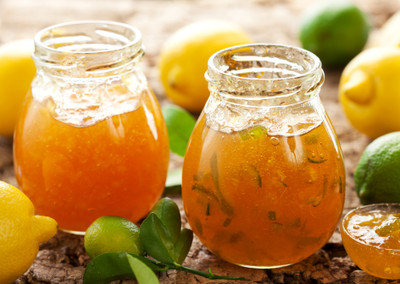Different marmalade recipes
Posted by The Wares Team on 24th Dec 2020
For us here at Wares marmalade is something of a puzzle. We simply can’t
quite work out why it’s not just as popular in the UK as jam is. It’s
heavenly on hot buttered toast and it works a treat on ice-cream or
added to Greek yoghurt. It can make a sublime steamed pudding and it can
even be used to add a sticky glaze to hams or pork joints. With a
preserve that is so versatile, why is it that relatively few people use
it regularly, at least compared with jam? We don’t know the answer to
that one, but we are on a mission to convert as many people as possible
to the joys of marmalade. And since right now is peak marmalade season,
we’re going to share a few ideas for marmalade in today’s blog post.
Marmalade jars: Some alternative approaches
One of the most common things we hear when people talk about marmalade
is that many folks don’t really like the shreds. Whether they’re too
big, too thick or too chewy, the shreds are what puts off most people.
Some people also find that a jar of marmalade hangs around too long
because they don’t use that much of it.
Well listen up, because we have an ingenious solution that will solve
the problem for every one of those particular issues. If you don’t like
the shreds too big, simply cut them much more finely when you are
preparing your orange peel. If you don’t like the shreds at all, remove
them at the point of pouring the marmalade into jars. After all, there
is no law to say that marmalade absolutely has to have shreds in it (so
long as you’re not entering it into a home preserves competition,
perhaps!)
And if you find the shreds are too chewy, simply cut them smaller and
cook them for longer! Rather than giving up on marmalade, just think of
how to solve your particular problem with it, and then you can enjoy it
exactly how you want it. And if you are one of the people who find that a
jar of marmalade hangs around for too long, there’s a simple solution -
make less marmalade to start with and pop it into smaller glass jars.
That way, your marmalade will stay fresh for longer, since you’ll only
be opening one small jar at a time. Of course, with some of the ideas
we’ve covered already for using marmalade away from the traditional
breakfast table, having it stay around too long may no longer be a
problem at all!
Filling those marmalade jars with some different flavours
Seville oranges are, of course, the quintessential fruit to use for
traditional orange marmalade, but if you fancy a bit of experimentation
there are plenty of other options to choose from, covering various
citrus fruits, including other types of oranges, lemons, limes and
grapefruits. Lime marmalade is one of our favourites and here’s the best
recipe for lime marmalade we know.
Ingredients
10 limes
950gms sugar
½ tsp bicarbonate of soda
Method
Halve the limes and squeeze out the juice, pouring it into a jug and keeping it separate from the peels.
Add the peels to a large pan and cover with roughly 2 litres of water.
Bring to the boil and then heat gently for about an hour. Remove the
peels using a slotted spoon.
Using a teaspoon, scrape the peels to get the pith and place this on a
square of muslin. Once you’ve done this for all the peels, tie up the
muslin cloth with string and pop it back in the pan of lime water.
Thinly slice the peel into shreds and return to the pan. Top up with
more water to cover everything and boil for another hour until the peel
shreds are soft and tender.
Remove the shreds with a slotted spoon and set aside. Add the lime juice
that you previously set aside to the pan and bring back to the boil
until there is about a litre of juice left.
Place the shreds in a maslin pan with the liquid and add the sugar and
bicarbonate of soda. Bring gently to a rolling boil until the marmalade
reaches 104° (use a jam thermometer to test this). Remove from the heat
when the setting point is reached and allow to cool slightly for 10
minutes.
Pour into clean, sterilised glass jars (or special marmalade jars, if
you prefer). Screw on the lids and allow to cool completely before
adding labels.
Hopefully in this blog post we’ve convinced a few sceptics to give
marmalade another try, whether that’s the traditional Seville orange
marmalade or a more unusual flavour, such as our lime marmalade recipe.
At this time of year it’s nice to have a few sweet treats in the store
cupboard and marmalade should be one of them! From steamed puddings to
muffins and marmalade cake, this heavenly preserve is definitely worth
exploring.


